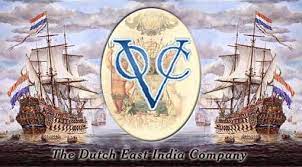Elburgh 1658
Documentary Source other than original Journals
“Letter of the Governor-General and Council to the Managers of the VOC December 14, 1658”
in J E Heeres 1899
The Part Borne by the Dutch in the Discovery of Australia,
London: Luzac and Co., p.81.
p.81
the skipper, together with one of the steersmen, the sergeant and 6 soldiers landed round Leewinnen Cape, finding there three black men, hung with skins like those of Cap de Bonne Esperance [Cape of Good Hope] with whom, however, they could not come to parley.
On the spot where the blacks had been sitting, our men found a burning fire …
Vlamingh Expedition 1696-7 – at Swan River
“Extract from a letter from Nicolaes Witsen to Dr Martin Lister, 3 October 1698”
in G Schilder (ed.), C de Heer (trans.) 1985
Voyage to the Great South Land,
Sydney: Royal Australian Historical Society, pp.221-2.
p.222
By night our people saw fires all over the country; but when they drew near, the natives fled.
————————————————-
“Letter from Nicolaes Witsen to Gisbert Cusper, undated (1698)”
in G Schilder (ed.), C de Heer (trans.) 1985
Voyage to the Great South Land,
Sydney: Royal Australian Historical Society, pp.214-5.
p.215
On the South Land they saw black naked people but could not come near them because they were fleet of foot.
——————————————
“Nicolaes Witsen’s account of de Vlamingh’s voyage”
from N Witsen 1705
Noord en Ooste Tartarye,
Amsterdam: Francois Halma, pp.179-183.
in G Schilder (ed.), C de Heer (trans.) 1985
Voyage to the Great South Land,
Sydney: Royal Australian Historical Society, pp.216-221.
p.218
the inhabitants had dug to get fresh water, in their opinion, and saw several small huts, but the people always fled a saltwater river up which they rowed eight or ten miles, but saw no more than two naked black people, who fled and could not be overtaken
p.218
the inhabitants commonly have a fire going, wherefore smoke is seen rising up everywhere by day, and fire by night.
p.219
When he [Vlamingh] had gone inland about eight or ten miles along the banks of the Salt River [Swan River] … … he discovered a high mountain range and saw that a great many footprints … pointed in that direction, and he also thought to see much smoke below that mountain range
p.220
It is singular that although one sees so much smoke rising up by day everywhere in this Land or Eendracht or Hollandia Nova, and fires at night – where there are hearths there are settled people – so few people are in fact seen, it seems that fear made them flee at the least sight or hearing of foreign folk and that they are fleet of foot and know how to hide in the forest.
Journal – Recording Mariner:Willem de Vlamingh
W de Vlamingh 1696-7
“The Geelvinck Journal”
in G Schilder (ed.), C de Heer (trans.) 1985
Voyage to the Great South Land,
Sydney: Royal Australian Historical Society, pp.102-145.
p.123 [coast opposite Rottnest Island, 31 December 1696]
the steersman … … reported that he and all the crew had seen much smoke rise up on the mainland coast;
p.123 [coast opposite Rottnest Island, 1 January 1697]
Have seen smoke rising in several places along the mainland coast.
p.124 [coast opposite Rottnest Island, 2 January 1697]
As before, saw smoke rise in several places on the mainland coast …
p.125 [Report of shore party, lower Swan River, 5-7 January 1697]
[Considerable evidence – footprints, huts, tree notches – of Aboriginal presence noted]
Ahead saw several smoke plumes rise up, approached with 3 people … … in order not to frighten the inhabitants with our entire company, but still found no people.
p.127 [mouth of Swan River, 11 January 1697]
While coming to join us it [the pinnace] went ashore where the men had seen 2 black people, but could find nothing but huts and fire, but no human being.
p.127 [lower Swan River, 12 January 1697, early hours of the morning]
came to several fires, where we kept very quiet … … but saw no people or anything else but the fires. Rowed ashore again in other places but found nothing but a few huts … … in which there lay a quantity of tree bark on which they had lain.
Journal – recording Mariner: Mandrop Torst
M Torst 1696-7
“The Nijptangh Journal”
in G Schilder (ed.), C de Heer (trans.) 1985
Voyage to the Great South Land,
Sydney: Royal Australian Historical Society, pp.146-162.
p.154 [coast opposite Rottnest Island, 31 December 1696]
On the mainland coast smoke was seen to rise up in several places, about three or four miles from us.
p.154 [coast opposite Rottnest Island, 1 January 1697]
again saw smoke rising in several places on the mainland;
p.154 [coast opposite Rottnest Island, 2 January 1697]
Again saw smoke rise in many places on the mainland.
p.154 [coast opposite Rottnest Island, 3 January 1697]
after sunset we saw man fires burning along the entire mainland coast.
p.154 [lower Swan River, huts, footprints, waterholes encountered, 5 January 1697]
But however thoroughly we explored everything, we found no people.
Towards the evening … … … we found a fire started by the inhabitants, whom, however, we did not see.
p.155 [Swan River, 10 January 1697]
meanwhile seeing some fires but no people
p.155 [Swan River, 11 January]
Here it was thought that some people were seen to be moving about, but having rowed to the river bank in the boat we found none …
p.156 [Swan River, 11 January 1697]
Round about [a pool of fresh water] we saw several footprints and the imprint of a hand in the sand, where the marks of the thumb and fingers proved sufficiently that they had not been there long. Moving up further we found a newly lit fire and three small huts …
p.156 [Swan River, 12 January 1697]
two hours before sunrise I went ashore again … … upon seeing several fires. We met with eight and saw heaps of branches lying near each, but no people …
Shark Bay 1699
Journal – William Dampier
W Dampier 1703
A Voyage to New Holland In the Year 1699, Vol. 3 Part 1,
London: James Knapton.
pp.120-130. [6 August to 14 August 1699]
No Aboriginal people seen or contact made.
First documented contact took place in March 1803 (Baudin Expedition) though it is likely there had been earlier contact with survivors of the Zuytdorp, wrecked 150 km to the south in 1712, and sealers and whalers from about 1790.
Produced by Australia On The Map, Australasian Hydrographic Society
First Dutch contacts in Australia
400 years ago Dutch ship Leeuwin encountered WA Coast – 1622 – Free journal


